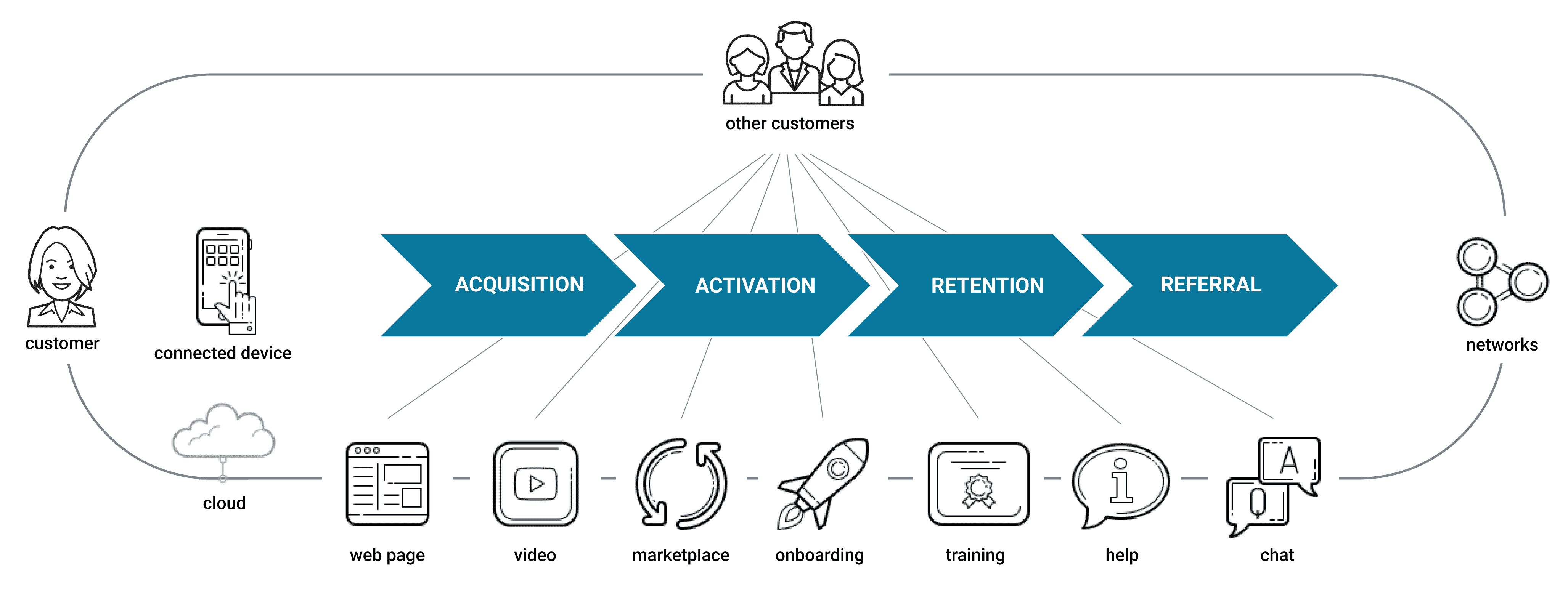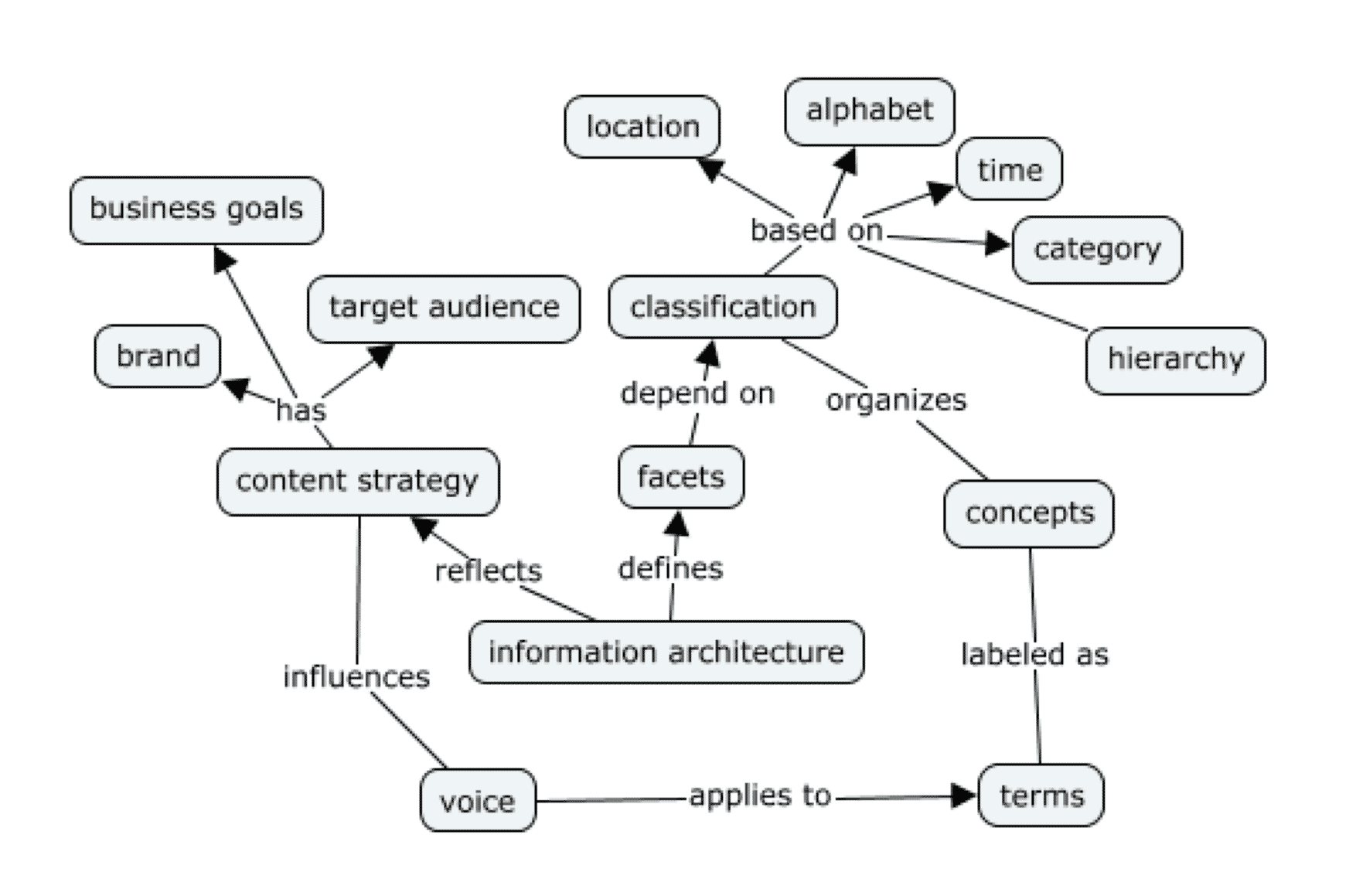This blog post is written by Marie Girard, a service design and content specialist who leads B2B organizations in the creation of successful customer experiences. Having worn multiple hats as information architect, enterprise content strategist and senior product manager at IBM, she believes content is core to business architecture and transformation.
Enhancing Customer Experience Through Information Architecture
The role of documentation and training professionals is more crucial than ever for the customer experience. They have the power to create seamless and delightful experiences for their customers through effective information architecture and content design. In this article, we will examine the central role of information architecture in improving the customer experience and provide practical insights for professionals.
Understanding the stakes of customer experience optimization
The relationship between organizations and customers has evolved into a continuous spectrum of mostly digital interactions, leading to the holistic concept of customer experience.

Customer experience refers to the impression an organization leaves on its customers at every point of interaction (or touch point). This experience encompasses perceptions and emotions before, during and after the purchase.
The organization and structure of content play a crucial role in shaping user experiences. Whether they navigate through product documentation or access training materials, users expect a smooth and intuitive journey facilitated by robust information architecture. Documentation and training professionals are at the forefront of these efforts, tasked with designing information architecture frameworks that inform and delight customers at every interaction.
The customer experience is based on four fundamental pillars:
- Pervasive and consistent brand image: A coherent brand identity resonates deeply with both customers and employees. The consistency between the customer brand and the employer brand promotes trust and credibility.
- Retention-driven growth: Loyal customers are not only repeat buyers, but also brand advocates who can boost growth through word-of-mouth referrals.
- Cross-functional governance: Collaboration between departments and functions ensures coherence and consistency in providing a seamless customer experience.
- Continuous improvement based on feedback: Customer feedback is a valuable source of insights that drives appropriate responses to changing conditions and promotes continuous improvement.
Let's now explore how to use information architecture to strengthen each of these pillars.
Pervasive and Consistent Brand Image
At the heart of every successful brand is a strong and consistent identity that resonates with both customers and employees. You can strengthen this identity through information architecture.
Align internal values with external communication
Make sure that your organization's core values and mission are consistently reflected in your content. By aligning internal values with external communication, you build trust and credibility. A brand statement sitting somewhere in a corporate presentation has no impact on the customer experience. For the brand to be effective, it must be integrated into all forms of content produced and shared by the organization.

Alignment and consistency are essential to a strong brand
Use the customer's words to build a concept model
Dig deep into customer testimonials and verbatims to uncover keywords that reflect brand perception. Build a concept model that maps key concepts of customer language and lays the foundation for your messaging and positioning.

An example of what a concept map could look like for “information architecture”
Ensure consistency across all touchpoints
Infuse brand principles in voice, tone guidelines and content templates. Consistency in messaging, tone and visual elements at all touch points strengthens brand identity and improves brand recognition.
The information architecture defines the key content elements or information blocks that need to be included in your templates. It also helps you define the various information contexts that you need to consider in your voice and tone guidelines.
By using information architecture to strengthen brand identity, you can create a coherent and memorable experience that leaves a lasting impression on customers.
Retention-Driven Growth
Customer retention is of the utmost importance for sustainable growth, and information architecture can play an important role in fostering long-term relationships.
Share customer testimonials internally
Content that showcases customer testimonials can inspire customers to share their experiences with others, but that's not all. Sharing these testimonials internally fosters a customer-centric culture. Making these customer testimonials easy to find through an effective information architecture is a great way to share product knowledge in a user-centric way.
Empower customers through self-service
Provide customers with post-sales content that adds ongoing value, from troubleshooting guides to advanced training materials. The ability of customers to find solutions independently reduces support costs and promotes self-reliance and satisfaction. The quality of this customer-facing content depends greatly on how easy it is to retrieve technical information internally.
Facilitate internal information retrieval
Organize internal content and resources such as training materials and employee manuals to support employee learning and development. For example, you can use Gerry McGovern’s Top Tasks methodology to define the architecture of a knowledge base. Clear and accessible content enables employees to do their best, thereby achieving both job satisfaction and better customer support.
Build customer feedback channels
Create efficient feedback channels that enable customers to share their thoughts and concerns. Use customer journey mapping to identify the touch points at which customer feedback should be collected.
By using information architecture to deliver compelling post-sales content, empower customers through self-service, and create customer feedback channels, organizations can foster long-term relationships that drive retention-driven growth.
Cross-Functional Governance
A seamless customer experience requires collaboration between departments and functions.
Break down silos
Use information architecture to promote collaboration between departments. Establish clear communication channels to ensure that everyone is working towards a common goal. Interviews with stakeholders are a basic practice in information architecture. Take the time to conduct interviews with each stakeholder on the customer journey to identify their goals and the content they create.
Use card sorting to define content types
Categorize content types using a card sorting method to uncover common ground and differences between stakeholders. Unified data organization and clear relationships promote a comprehensive understanding of customer behavior and preferences. For example, identify which departments create which of these types of content:
|
Content type |
Purpose |
|---|---|
|
Explainer |
Understand the elements and logic of a concept or system. |
|
Question-Answer |
Resolve a problem or take a quick decision. |
|
Procedure |
Perform a task. |
|
Case study |
Understand how a solution can be applied in a given context. |
|
Report |
Draw conclusions from an event or study. |
|
Scenario |
Get a global view of the steps to follow in a given situation. |
|
Introduction |
Become familiar with a product, concept or system. |
|
Collection |
Retrieve the content related to a subject matter. |
|
Reference |
Get detailed information on a precise element. |
|
Comparison |
Make a choice between several options. |
|
Notification |
Understand the status of a system and decide how to react to it. |
|
Interview |
Discover a person's view on a subject matter. |
Map content to the journey
Develop a content model that is in line with the customer journey and map content into the journey phases. In this way, collaboration opportunities between departments become more visible.

Using customer journey mapping to identify information needs and map content to them
Determine how often these types of content are published and updated. This gives you the expected frequency of these potential cooperations.

By using information architecture to break down silos and streamline content production, you can promote the cross-functional governance necessary for a seamless customer experience.
Continuous Improvement Based on Feedback
Customer feedback is a valuable source of insight that drives continuous improvement and innovation.
Collect and analyze feedback
Create efficient feedback channels that enable customers to share their thoughts and concerns. Systematically analyze feedback to gain valuable insights into customer needs and preferences. A great way to facilitate feedback analysis is to mark it with metadata. Define an information architecture for feedback content so that you can consolidate it over time and gain insights from it.
Act on feedback
Ensure that feedback is acted on promptly and effectively. Incorporate feedback into your content creation process to address customer concerns and make improvements that enhance the customer experience. With the tags defined for feedback information, you can trace the source of improvement actions.
Communicate changes
Communicate changes and improvements to your customers in a clear and transparent way. Keeping customers informed fosters trust and loyalty and creates a positive feedback loop for continuous improvement.
By using information architecture to collect and analyze feedback, act on feedback, and effectively communicate changes, organizations can drive continuous improvement and deliver exceptional experiences that keep customers coming back for more.
Conclusion
Enhancing the customer experience through information architecture is not only about structuring content, but also about fostering meaningful connections and driving continuous improvement.
By aligning internal values with external communication, organizations can create a pervasive brand image that resonates deeply with both customers and employees, fostering trust and authenticity. Retention-driven growth is based on robust employee knowledge management and compelling post-sale content, empowering customers and reducing support costs. Cross-functional governance ensures coherence and collaboration, while continuous improvement based on feedback demonstrates responsiveness and promotes customer loyalty. The use of information architecture across these pillars strengthens customer experience and drives growth and innovation.
Let's continue to prioritize customer-centric approaches and take advantage of the transformative power of information architecture to create great experiences at every touchpoint.











